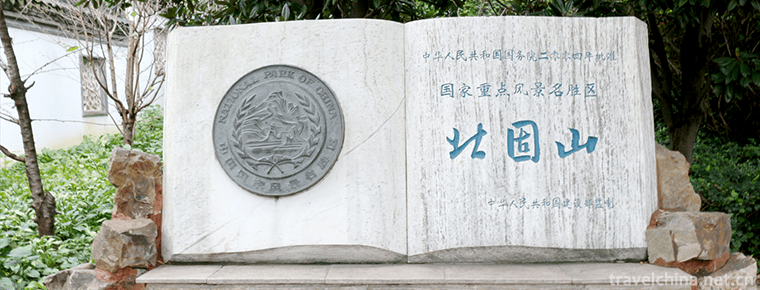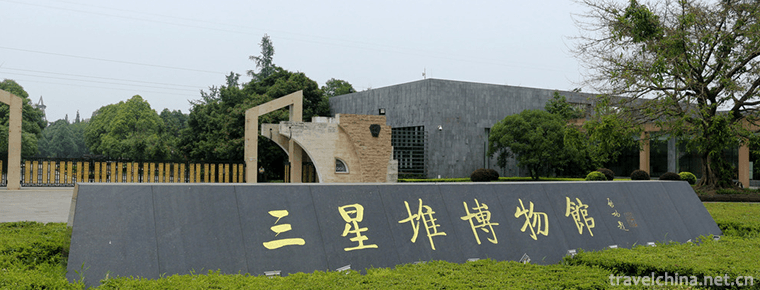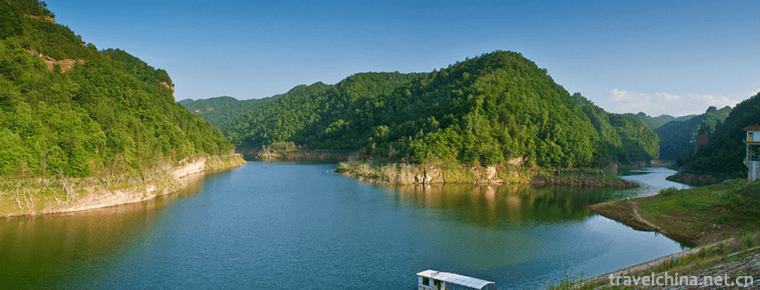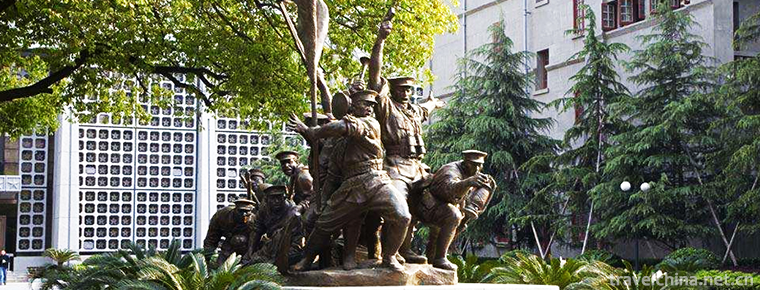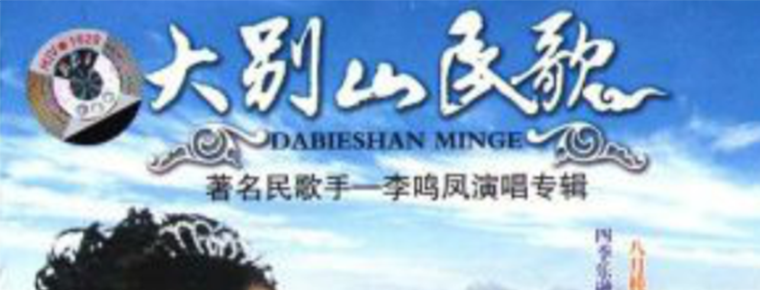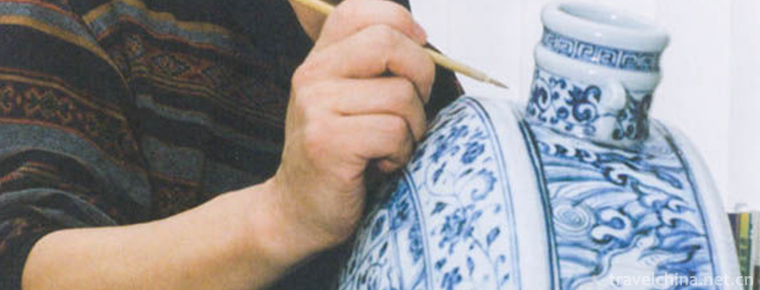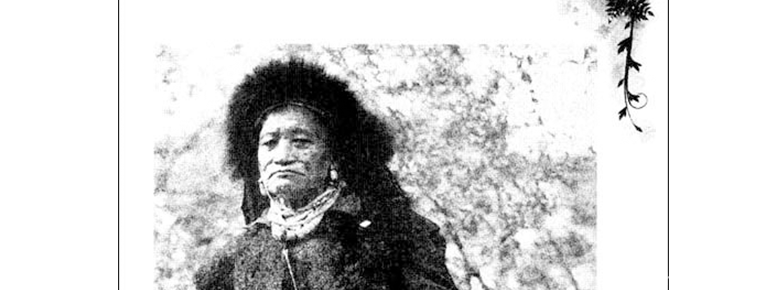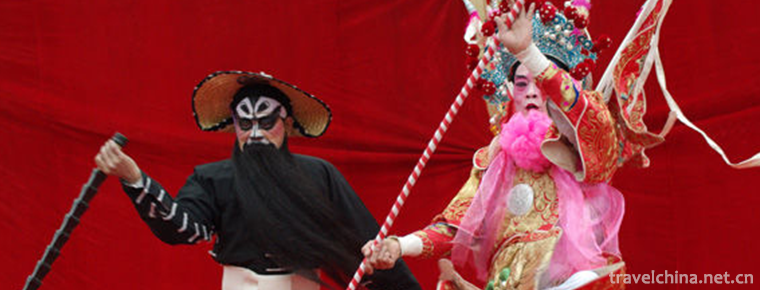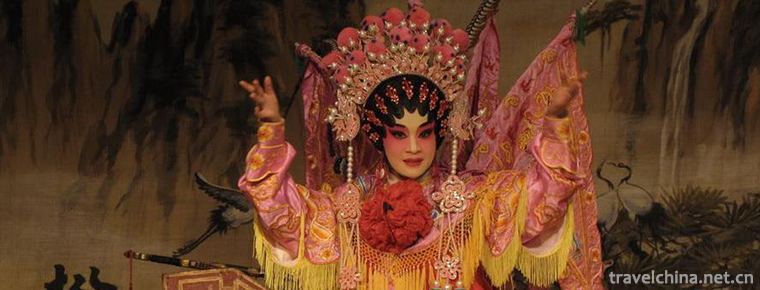China of chunqiu yancheng tourist area
China Spring and Autumn Yancheng Tourist Area (also known as Yancheng, Spring and Autumn Yancheng) is located in the central city of Wujin District, Changzhou City. In 2010, it was assessed as a national 4A-level tourist attraction. In 2015, it passed the national 5A-level tourist attraction resources and landscape quality assessment. Yancheng tourist area has a total planning area of 7.6 square kilometers, which is divided into five blocks: the Spring and Autumn Yancheng Site, the Spring and Autumn Paradise, the Wildlife World, the traditional commercial neighborhoods and the Baolin Zen Temple in Yancheng.
China's Spring and Autumn Yancheng Tourist Area, by reproducing the cultural scene, deduces the splendid historical culture of the Spring and Autumn Period in an all-round way, actively creates the brand of Chinese Spring and Autumn Culture, and forms a tourism complex that integrates tourism, leisure, entertainment, popular science, shopping and catering. "Look at Beijing in the Ming and Qing Dynasties, Xi'an in the Sui and Tang Dynasties, and Yancheng in the Spring and Autumn Periods." The Spring and Autumn Yancheng tourist area is just like a bright pearl shining in the Yangtze River Delta.
On February 25, 2017, it was newly promoted as a national 5A tourist attraction.
Yancheng was built in the late Spring and Autumn Period. It has a history of more than 2900 years.
In 1935, Chinese archaeologists conducted the first field survey of Yancheng, confirming that Yancheng was a relic of ancient residential activities, which attracted the attention of academia. In the 1950s and 1960s, three canoes and a batch of bronzes and pottery were unearthed in the inland river of Yancheng City. The unearthed groups of cultural relics showed the unique cultural features and connotation of Yancheng Site for the first time, causing a stir in society and academia. Since then, the study of Yancheng has been continuous.
In 1986, the archaeological excavation team of Yancheng Site in Jiangsu Province carried out the first six-year archaeological excavation of Yancheng Site, and solved some outstanding problems. As one of the members of the archaeological excavation team, Lu Jianfang, an associate researcher of the Nanjing Museum, after years of research, said: "Yancheng is a military castle of the State of Wu. It is the only well-preserved military facility in the Spring and Autumn Period in the world, which is in the form of three city rivers and three city walls."
Why do people live in Yancheng? At present, there is no definite conclusion on this issue in archaeological circles. Referring to the records of Yuejue Shu, Wudi Zhuan in the Eastern Han Dynasty and Taiping Huanyu Ji in the Northern Song Dynasty, we know that Changwu area was called Yanling in the Spring and Autumn Period of Wu State, and the late Spring and Autumn Period was the food town of four sons of Wu King Mengshou. Jizain, dissatisfied with the assassination of the Royal bureaucrat by Helu and vowing to "never enter Wu for life", dug rivers and built a city in his feudal territory of Yanling. In today's words, he built an "independent kingdom" called "drowned city" to show the meaning of drowning to death. It is also speculated that there was once a flooded country where the flooded city was the capital, but this statement lacks sufficient basis.
The earliest historical record of Yancheng is Yuan Kang's Yue Jue Shu-Wu Di Zhuan of the Eastern Han Dynasty: "Nancheng of Piling County, so the ancient imperial land is also flooded." The Southeast grave, Yanjun's children grave, to the county eighteen li, Wu buried. Changwu area was called Yanling in the Spring and Autumn Period and Piling in the Han Dynasty. It was the feudal city of Jizha, the fourth son of Shoumeng in the Spring and Autumn Period. The Northern Song Dynasty "Taiping Huanyu Ji" said: "Changzhou Prefecture in the Spring and Autumn Period was the interior of Wu." "Historical Records" said: "Prince Wu Jizha is based on the city of Yanling. Wu was destroyed by Yue and restored to Yue by Chu in the Warring States Period. Therefore, Yue Jue Shu is called "Yanjun City". The Qing Dynasty's "Reading Historical Records of Fangyu" said: "Yancheng, twenty miles southeast of the (Changzhou) Mansion, has three cities, deep and wide trenches, and fifteen miles wide." In addition, some local chronicles in Changwu also have sporadic records, such as the Song Dynasty "Xianchun Piling Chronicle" cloud: "Yancheng City in Yanghu Yanzheng Township" and so on.
Yancheng Huaiguwen, Wild Crane in Wild Village
The smoke of wolves disperses, the mountains and forests, and the grains are magnificent and solemn. By the Sanshui Bridge, there are many grievances and grievances.
The city is like iron, Sensenbi arrows, Xiaoli thousand voices throat. Tilting clouds send evening, Twilight sunshine like blood.
Once I remembered the dignity of the emperor, my eyebrows were small and weak, and I was sniffing in my dream. Build a city, garrison troops, imperial powers, why three mountains and five mountains?
Furnishing the present and cherishing the past, we should look at the strong and eat the weak, and draw a few layouts. What's life like? It's rainy and windy.
Since 1958, a large number of geometrically printed pottery pots, cylinders, urns, bowls and bronzes (such as copper bells and tripod) have been unearthed in Yancheng. The dugout boats unearthed in the inner city have stirred up the Chinese archaeological circles. The largest one is chiseled with a baking axe made of Nanmu fire, 11 meters long, 0.9 meters wide and 0.45 meters deep. It is known as "the first boat in the world". It is now stored in the Beijing Museum.
Shangshu, Zhou Shu and Cai Zhongzhi mentioned in his hits that "Cheng Wang expelled Huaiyi in the East and then practiced it and became king's government." King Cheng practiced his death and would move his emperor to Pugu. "Hankong'an's Shangshu biography said,"When King Cheng ruled, Huaiyi, Fangguo rebelled, and Prince Wang seized him, he disappeared and migrated, repeating his number."Tang Kong Ying-da's Shangshu justice said,"At the beginning of Zhou Gong's regency, Fang and Huaiyi managed and Cai Zuozuo rebelled, which was decided by Zhou Gong Zheng. At the beginning of Chengwang's reign, Huaiyi went to war with the dying and rebellious princes. King Cheng expelled Huaiyi in the east, and destroyed the country.
Ten Legends
Tortoise rescue
Legend has it that during the Shang and Tang Dynasties, there was a catfish (Mi n, ancient water name) in the Wensi River Basin on the southern side of Mount Taishan in Shandong Province. In the tribal country with surname, the people always worship tortoises. Therefore, as the name of the country, it symbolizes the sublimation of the sacred image of the clan emblem: the tortoise is the tribe.
Later, because of following the Shang Dynasty, the Gong nationality was destroyed by King Wu of Zhou when he attacked the Yin Dynasty. Ethnic groups migrated to Eastern Qufu, Shandong Province. Unexpectedly, a few years later, because of the "three prisoners" rebellion, the dying state was again killed by Zhou Gongdan during the Eastern Expedition, and the dying king was maimed. The people had to migrate to Huaiyi with the new emperor. However, the new emperor of the Zhou Dynasty, Chengwang, feared that there was still a rebellion among the Dang people. He wanted to kill them quickly, so he led his own military expedition. Xiao Huangjun had no choice but to take his people to the Southeast again.
They fled to the Yangtze River, but were blocked by the torrential water. Xiao Bingjun listened to the sound of pursuing soldiers and killing more and more close, anxious to be at a loss, looked up to heaven with a long sigh: "I die in heaven!" Say what you want to do and jump into the river and commit suicide. At this time, a tortoise with him suddenly opened his mouth and said, "Don't worry about the hero!" Just jump out of the car. This is a strange tortoise, six feet long, disliked by others, is raised by Xiao Huangjun since childhood. The six-legged tortoise climbed up to the water quickly and stretched its neck to drink. But he heard the water rushing and was sucked into his stomach by the tortoise. Tortoise, see the water will be long, will not be like a square foot. At this time, the six-legged tortoise motioned Xiao Huangjun and the people to stand on its back. Strange to say, Xiao Huangjun and the people went up in turn, but they didn't feel crowded. When the tortoise saw all the people standing up, he told them not to open their eyes.
Six-legged tortoises roared, and then the wind blew, sand and rocks flew. Two feet in the middle of the six-legged tortoises became a pair of two-inch-long wings. They soared up and flew across the river in the blink of an eye. After landing on the South bank, the six-legged tortoise retrieved its wings and climbed rapidly to the southeast. Although the people stood steadily on the back of the tortoise, they could only hear the whirring of the wind in their ears, and they were so frightened that they hugged together that no one dared to open their eyes.
I don't know how long it took for the six-legged tortoise to climb to a swampy wasteland in the south of the Yangtze River and finally collapse. He stopped and turned to see if there were any pursuers behind him. When it turned hard to look northwest, only a vast expanse of barren swamp land, it was at ease. Unexpectedly, this turn, but no longer powerless to move, just a burning incense of Kungfu will die, the body slowly into the wetland, highlighting a tortoise-shaped pattern in square miles.
Xiao Bingjun and his clan saw the situation and cried loudly. To commemorate the great grace and virtue of the six-legged tortoise, Xiao Bingjun ordered that the tortoise be built in the form of a tortoise on the ground, so that the tortoise would remain with the people of the Ding nationality forever.
Later, the city became tortoise-shaped, the head and tail of the tortoise and six feet became eight rivers, and the gate of the city was located at the mouth of the tortoise, toward the northwest.
Double turtle River
According to legend, Wang Jun was rescued by the tortoise to a barren swamp in the south of the Yangtze River and built a city according to the figure of the tortoise. However, because of the large amount of work, the difficulty of people walking in the swamp, the simple tools and low labor efficiency, the progress of river excavation and city construction is very slow. The matter is so sad that you can hardly eat in the day and sleep at night.
That evening, the emperor was full of sorrow and thought, and he kept thinking until the early morning when he was drowsy. In his sleep, he suddenly saw the tortoise coming out of the door, wounded. "Where do you live?" Wang Jun hurried forward and said. The tortoise said, "Don't ask. You can dig a hole in my abdomen if you can't build a river. There are two little turtles to help you. After that, the tortoise opened its stomach with its claws, and instantly the blood flowed. You wake up crying. The next day, according to the words of the tortoise in his dream, Wang Jun excavated in the center of the tortoise-shaped ground. Half a day, dug into two Zhangyu deep caves, see the cave actually sleeping in a yellow one white two turtles. Wang Jun carefully picked up the two little turtles. Who knows these two little tortoises will grow long when they see the wind, and soon they will grow into a square foot, and "hoo" a sound into the swamp, according to the tortoise-shaped pattern arch earth to build a river.
Two little turtles arched and piled up for three days and three nights. Finally, three ring rivers were arched and three ring cities were built. After the prototype of Chenghe River was completed, the two little turtles returned to their original shape and jumped into the two deep caves to lie still.
Later, the clan called the two deep caves in Zicheng "Jinjing" and "Yujing". Legend has it that whenever the "seven clouds" appear in the sky, the golden well where the turtle hides is filled with drums and music and glitters with gold. In another Yujing (also known as Yuguijing), the little white turtle lays one egg every ten days. The egg is as big as a fist and crystal clear. Eggs accumulate over time and accumulate constantly at the bottom of the well, so that the well shines like stars and white jade shines. It is said that if someone eats the white turtle eggs, one can dispel illness, two can strengthen the body, and three can prolong life. Of course, it's hard for ordinary people to eat it. Only those who have accumulated virtue and good deeds can enjoy it.
The two wells remained for more than 2000 years until the Guangxu period.
Drowning Wang Zhannv
On the west side of the outer city of Yancheng, there are three tall earth piers arranged in the North-South direction, which are called head piers, stomach piers and foot piers by local people. There is a very moving story about these three mounds.
Shortly after the death of the emperor caused the death of the city, the wife gave birth to a daughter. Wang Jun named his daughter Miao in the name of Sandao Miaohe. Princess Miao was smart and kind from childhood. When she was 15 years old, she came out like a lotus which spent water. She was the Pearl in the palm of the couple. Princess Miao is diligent, kind, gentle and beautiful, good at silkworm, spinning and weaving, and also loves playing chess, painting, singing and dancing. She is a good girl with both talent and appearance.
The ambitious son of the neighbouring country who stayed in the city, coveted the territory of the city and coveted the princess three feet, colluded with the woodcutter who was greedy for money in the city, cheated the trust of the king and became the horse of the city. One day, while Prince Yan was out on the moat, he took the name of the princess, cheated the key of the back garden and stole the precious white turtle of the moat.
When Prince Yan was trying to escape from the Imperial City with a white turtle in his arms, he happened to meet the princess coming back from the training ground. When the princess saw this, she accused him of his despicable behaviour and wanted to be dealt with by military law. Prince Yan felt guilty and asked the princess to forgive him. Then, when the princess did not pay attention to him, he pulled out the dagger, Gongziyan's bronze sword, which penetrated the princess's chest. The good heart was hurt by the evil and ruthless sword. The princess fell into a pool of blood before she could call and take another look at the water and soil that nurtured her.
After Prince Yan desperately killed the princess, he fled in a hurry. When Wang Jun learned the news, he rushed back to the city, stopped the inflammation on the way, and captured the white turtle after a fight.
When he returned to Zicheng and saw his daughter's death, he wept bitterly and was grieved. He accompanied the princess with white turtles and other treasures and buried her on the inner wall. Fearing that someone would steal the treasures from the princess's tomb in the future, the emperor built three mounds at the funeral, which made it hard to tell the truth from the truth.
Since then, people have missed Princess Miao. Every time it comes to the Qingming Dynasty, they go to the memorial service. At the same time, take a pinch of soil, add it to the princess's grave, and plant trees. Over time, the princess's tomb was piled up into three large piers. For the convenience of pointing out, people named the three piers head pier, stomach pier and foot pier in turn.
As people pay homage to the princess's tomb, their wishes are very effective. Later, they call the princess "Princess Bailing". Thus, a beautiful legend has been spreading for thousands of years, and it is still moving.
There are different opinions in the historical and archaeological circles about the origin of Yancheng and who is the owner of Yancheng. First, Yancheng is Xia Jie's departure from the palace. One is that Yancheng was the capital of the dying state in the late Shang and early Zhou dynasties, and the dying monarch was then the dying monarch in the east of Qufu, Shandong Province. Legend has it that King Zhou Chengwang, who collaborated with Wugeng, a descendant of the Shang Dynasty, launched a rebellion, was destroyed by King Zhou Chengwang, and led the remnants from Shandong to the south of the Yangtze River, where they dug rivers for cutting and dumped earth for cities, still known as "Niang". Because the word "flooded" at three points in ancient times and the word "dying" without three points of water are commonly used, which has been circulating until now, so it has the name of "flooded city". Another is that in the late Spring and Autumn Period, Prince Jizha of Wu Dynasty, dissatisfied with the assassination of the Royal bureaucrat by Helu and determined to break with the violent politics of Helu and "never enter the Wu Kingdom for life", dug a river in the feudal Yanling to show his determination to remain submerged and the state name "submerged the city". Naturally, the owner of Yancheng is Jizha. Yancheng, a historic city, has many puzzles along it, which need to be solved by archaeologists and historians. According to historical records, the highest wall of Yancheng ancient city is 20 meters, and the width of the wall foundation is 25-30 meters. All the walls are made of tamped earth.
King of gold
Yancheng used to be called Jingcheng. Legend has it that long, long ago, there was a vicious and greedy moneybag in the area who took over the Dangcheng River. One summer, the rich man hired several fishermen to go fishing in the Dangcheng River. The old wealthy man was afraid that the fishermen would take it secretly. In addition to sending Zhuangding to guard the river, he also sat in town for three days and supervised himself.
On the eighth day of fishing, a fisherman suddenly fished a rope out of the river. The rope was so thick that it shone golden in the sunshine. "Baby!" When the old wealthy man sees him, he thinks about it. He hurried to the riverside and shouted, "Put it down, this is the treasure left by my ancestors, specially placed in Fengshui of Heli Town!" He also frightened the fishermen with great care. If anyone took this treasure rope casually, it would bring doors to ruin, and it would also bring disaster to the people of the whole city. The fishermen listened and threw the rope into the river.
That night, the old rich man and his son quietly came to the flooded river in the moonlight. They rowed the boat to the fishermen's daytime fishing place and put a row of rolling hooks into the river. Soon, the hook tied the rope, and the father and son pulled hard upward. As soon as he pulled up a short section, the old rich man bent down impatiently, licked his rope with his tongue, and exclaimed in surprise, "Sweet, gold!" The discovery delighted the rich man and his son. Despite their backache and aching backs, they were exhausted and pulled up in front of and behind the boat desperately.
the golden rope seems to have no end. It can't be pulled out anyway. Soon, the front cabin was full, the back cabin was full, and the river was flat. However, the old wealthy man is in high spirits, where to let go, or pull ahla. Finally, the boat could not bear the load. The River rushed into the cabin, and the boat sank rapidly. In a blink of an eye, it sank to the bottom of the river. At this time, the old wealthy man wanted to throw away the golden cord and go up. But the golden cord was as sticky as it was on his hand and could not be thrown off. Soon, the father and son of the old rich man sank to the bottom of the river and flooded the river with a belly of water drowned!
Originally, the purple gold rope was the rope tied to the canoe by King Niang. Later, when King Niang's soldiers were defeated, they sank to the bottom of the river. Usually, people can't see anything. Only in the late night of August 15 every year, when the bright moon is in the sky, can we see a burst of golden light soaring into the sky, and no one has ever fished anything. Unfortunately, the gold rope was found by the greedy old wealthy man, and the greedy old wealthy man was rewarded, and was dragged into the river by the gold rope and drowned.
From then on, the city was called "flooded city".
Attack the city with fire
Legend has it that there is a city left in the northeast corner of the city. Wang Xuancheng has been staying in the city for a long time. He knows that by force.
Strong attack on the city will not win, so we will use all kinds of pleasing methods to win trust in the emperor. Later, Yan, the son of Liuwang, was recruited by the emperor as a horse in the East bed.
Soon after, Gongziyan came up with an idea for Wang Jun, planting dogs and tribulus all over the outer city walls. The sharp thorns and dense ramps of the dog's tribulus grow all over the city, and even the dog can't penetrate them, which can strengthen the city defense. When you heard this, you thought it was a good idea, so the army and the people acted according to plan. Seeing the success of his plan, he came up with a second idea, which allowed Wang Jun to plant lentils all over the inner city wall. He said that when lentils blossomed, they were purple and pink, and the clouds steamed brilliantly, which became the natural decorative barrier of the city. Prince Yan's meticulous thinking and good means were praised by the emperor.
In the hot summer, Wang Jun stood at the head of Zicheng City and watched the lentil blossom and the red clouds. Wang Jun was very happy to think that the picturesque flooded city would be an invincible fortress.
But in winter, the natural city defense on the Tucheng wall, the dog and tribulus with sharp thorns, withered, and the lentil vine, once a wonder of green leaves and safflower, withered and yellowed. The king thought that the time had come to let Prince Yan steal the precious white turtle of the country. After the defeat, he attacked the city.
Remaining soldiers fired rockets at the terrestrial calves and lentils on the inner wall outside the city, and the whole city burst into flames. The son of the king seized the city. After the defeat of the emperor, he rushed around to contact his neighbors and three countries. Three days later, he returned to the city with heavy troops and wiped out his father and son.
Yao Ling bells
As the name implies, "Yaoling Bell" is the place where the bell rings. It was used by the emperor to save time and clear his mind.
Originally, the Dang nationality was a country in the north. Because of the abuse of their ancestors, they were attacked three times by the King of Zhou and fled to this place. In order to make the people and their descendants remember the lessons of the past and strive for strength, the first thing that Xiao Bingjun did after he built the city was to choose a place on the inner city hill and hang a bronze bell half a person high on the tree. Every morning and evening, Wang Jun leads ministers here to repent for the bad deeds of their predecessors and to pledge their determination to become a powerful country.
At this time, the master of ceremonies will ring the copper bell, "Dangdang" bell inspiring. Later, because of its unique terrain, which runs through the three rivers, it was used as a peak platform for military defense at the same time. It is said that whenever the enemy was found, Wang Jun would ring the bell here to warn the whole city to enter a state of readiness. When the enemy attacked the city, the emperor personally sounded the bell and called on the army and the people to protect the city.
From later archaeological studies, it was found that in the Spring and Autumn Period, the three moats were connected in series. There are still two river ruins in the Spring and Autumn Period below the surface of 1.8 meters.
Tongjiang, Longquan
In the Waicheng River southeast of Yancheng City, there is a place called Longquan, also known as Longtan, where the water flows for a long time. Legend has it that when the tortoise rescued the dying people from crossing the river, it sucked up the Yangtze River. When you get here, you leave a belly of water here. Who knows, after this water seeps into the underground, unexpectedly connected to the Yangtze River. Therefore, the water here is clear and delicious, which is totally different from the local water quality.
At the junction of the water and the river, it is clear and muddy. The crops irrigated by this Longquan water also grow very vigorously. The rice, potato, beans and other foods produced are of high quality and double nutrition.
Six years of drought in Qingxianfeng (1856) and thousands of miles of barren land. At that time, hundreds of rivers were dry and cracked, while the water inside and outside the flooded city was as clear as ever, and the water was not dry. The reason was that with this Longquan, Yancheng people and neighboring villagers survived the disaster through the Longquan water.
Here once circulated the myth of "Dragon Girl Playing in Water, Jade Turtle Making River", and a folk song: "The water of Longquan East China Sea is sweet and fragrant for thousands of years, moistening all living things on both sides of the Taiwan Strait, Jinchilong Girl White Jade Turtle." Legend has it that this was the place where Princess Miao rowed and played.
Yue Fei stationed troops and flooded the city
In the spring of Song Jianyan's fourth year (1130 A.D.), Yue Fei led his troops to Yancheng, Changzhou, to control Guangde in the South and Liyang in the west, and intercepted Yan Zongbi's troops from crossing the Yangtze River to return to the north.
Yue Fei organized soldiers for training in a short period of time. Yue Fei was very strict with the army. Soldiers took a piece of hemp from the people and used it to tie the grass. That is to say, they were beheaded. He paid special attention to the training of soldiers, the hillside, the trench jumping, all wearing heavy armor training. Yue Fei can launch from left to right, and so can his soldiers.
A well-trained soldier who acts strictly in accordance with orders will not waver if he suddenly encounters an enemy. Grand Admiral Yue paid a clear reward and punishment, cared about soldiers, often dispatched medicines for patients, and often consoled their families on expeditions. Those who died in battle should raise the children they left behind. All rewards are equally distributed among the subordinates.
Yue Fei practised and lived a simple life. It is said that he has a famous saying: "Civilian officers are not greedy for money, military officers are not afraid of death, the world will be peaceful." It was when Yancheng sent troops to attack the enemy.
At that time, Jinbing occupied Liyang, and Yuefei sent Liu Jing to lead the army to attack at night, killing 500 enemies, capturing 12 people, such as Nuzhen, Han Erjun and Puppet Liyang Zhixian, and recovering Liyang. Golden soldiers rushed South and burned and looted everywhere. Golden soldiers fled to Jinquan Township in Yixing. Yue Fei led the army to catch up with Yixing and met Jinbing in the south of Yixing City. The two sides fought fiercely in Lily Field. Yue Fei personally led the army to fight with the golden soldiers. The military gates of both sides were far away, the drums were beating, the people and horses were screaming, the impact of swords and swords was like the roar of pines and bamboos, and the dust of war covered the sky. Yue Fei jumped horses with his gun, and thousands of strong men fought more and more bravely. The golden soldiers were invincible and fled to the north in confusion. Yue Fei chased and killed for a while, sending Yue Yun to lead his troops to fight regularly.
According to legend, Yue Fei's relatives camped in Yancheng, 20 miles away from Changzhou City. Zhang Xian, Wang Gui and Fu Qing quoted their troops and horses, Qishuyan Bridge south of Fushi, and Fu Qing and Wang Wan led their troops to Fuxi River Beach. Yue Yun and Zhang Xian also disguised themselves as new gates for the defeat army, and sent Li Dao, Yao Zheng East and west to assist them, leaving Liu Jing to guard the camp. A few days later, Yue Fei's relatives led a thousand Yuejiajun troops to meet Jinbing in the eastern suburbs of Changzhou, and the two sides launched a bloody battle. Suddenly, the sound of war drums, ambushes, Yuefei four battles are quick, Wushu led the army to the west, the enemy's casualties and drowning are not countable. Yue Fei hid and killed from behind. The Jinbing died 15 miles away. He captured 11 people, such as Li Kun, the young head of Nuzhen Wanhu, and Li Wei, the Han Er.
As the Jinbing flew west, a torch burned Changzhou into a pile of ruins. Yue Fei led the army in pursuit and marched to Jiankang. He fought with the Jinbing again in Qingshuiting Pavilion and won a great victory. The enemy was dead ten miles away. Forty-five Han troops of Nvzhen Bohai Sea were captured alive, 175 earrings were chopped, and numerous golden drums were won in Majia.
At that time, Yue Shuai-fu was sitting on the slopes of Yancheng City (now the south side village position). Shuai-fu was a six-room house sitting in the north facing the south. It was six feet wide and six feet deep. Its eaves were three feet six feet high. There was a big red pillar outside the gate. There is a couplet on the front pillar of the Shuaifu Gate, the couplet said: military officers are not afraid of death; the lower couplet is: civil officers are not greedy for money; horizontal criticism: loyalty to the country. The site was demolished by Meng Erya, a local businessman, in 1930, and timber was transported to Gaotian village outside the city to build the ancestral hall of the Zhuang family. By 1990, the ancestral hall of Zhuangjia had been demolished and the timber had been bought to build factories.
Yue Shuai's Mobao Liuyan City
Yue Fei is a well-known general of both civil and military skills, and is countable in the thousands of years of Chinese history.
Four years after Jianyan (1130 A.D.), Yue Fei, 28, led 2,000 soldiers to fight under the city of Changzhou. After recapturing Changzhou from the golden hands, they swept the golden soldiers and recovered large areas of land lost in the south of the Yangtze River, such as Zhenjiang and Jiankang (now Nanjing). In the same year in Yixing, Liyang, Guangde, Guoji and other bandits, the Sixth World War and the Sixth Jiejie, so that the people from the ravages of suffering. Yue Fei's patriotic spirit of loyalty to his country has been widely praised by the Chinese people.
However, it is seldom known that when Yue Jiajun was stationed in Yancheng, Yue Fei left behind poetry and ink.
Legend has it that Yue Fei was ordered to go to Piling (Changzhou) to fight against the Jin Army. When he passed Zhang (Zhang) River in Yixing, he visited Zhang Wen, a senior scholar, and inscribed "Qijue and Zhang Xi to Zhang Wen". The poem said, "He had no intention to buy wine and admire youth, but was blank and new to the mirror. Flowering teenagers should laugh at me and visit high-ranking people.
The first line of the poem "without intention" means that things happen naturally without intention at first. "Admonish," said Chen. "Youth", here for the understanding of youth. The second sentence "hiccup" means exclamation. The last sentence "hanging down" means "hanging down" or "gradual" interpretation. "Oyster" refers to thin, tired. "Gaoren" refers to the hermit who speaks beyond the world. Here it refers to Zhang Qian. Zhang finished his poem and said, "Don't remember the spring when you meet each other. It's neither the old nor the new. It's a pity not to admit that people are evil when they ask for color or voice."
Later generations deposited Yue Shuai's poems in Yancheng and recorded in the Chronicle of Changzhou Prefecture. Up to the thirty-fourth year (1695) of Kangxi in the Qing Dynasty, "the present lehr stone still exists". Since then, there has been no textual research on the existence of stele stones.
At the same time, Changzhou also found two handwritten inscriptions when Yuefeitun soldiers flooded the city. One is Yue Fei's inscription when he revised the genealogy for the descendants of Su Dongpo in Changzhou: "The Su family of Meishan is handed down from generation to generation to treasure", the other is Yue Fei's inscription when he revised the genealogy for Wujin Wang family: "Wang Shibao".
Mao'an, a monk of Xingyong
In the first year of Hongguang (the year before B, 1645), Xingyong, a 50-year-old monk in Sichuan Province, went to Longchi in the East China Sea and passed through Wujin after climbing the mountain road from Maoshan. It is said by chance that there is an ancient city ruins in the south of Wujin, Yanxi monument, Qushui encirclement, green cypress and beautiful, quite a kind of dustless and vulgar land, unconsciously full of interest, rushed to. While visiting Yancheng for a while, the monk saw the temple in Zicheng District, where the temple was not covered by rain and wind, and the statues of Guanyin Master and Bodhisattva Buddha were decadent. He could not help sighing and felt sorry for it. He immediately expressed his wish to rebuild the temple.
Therefore, he changed his plan to go east and decided to make preliminary repairs to Mao'an temporarily. Three days later, he chose more than one mu of land in Zicheng and excavated the foundation of the nunnery house with pickaxes. Since then, Yongseng monks have been resting day and night, raining and wind, building bricks and tiles, and building mao'an by themselves.
For many years, he chopped firewood and carried water. His shoulders were cracked and he was very hard. At first, the people in the neighbourhood ignored it, and few people came to help one or two. Yong monks are honest, not good at going out to collect money. They only carry money with them, save rations and live frugally. Sometimes they receive a small reward for praying for Buddha's beneficiaries to recite sutras and lectures. Slowly, the reward for reciting the Sutra accumulated.
Later, the donors learned that he was so honest, not for fame and fortune, and were moved by it, and they all followed suit. It can be said that sand accumulates into a tower and armpits form a fur. Over the past 10 years, after the building was completed, the monk bought alarm bells, drums, music and other corresponding instruments. The walls were solid, bricks were ground, bamboo was planted, Buddha statues were rebuilt, incense was burning and drum bells were ringing again.
At this time, the monk Xingyong was 73 years old. On the seventh day of the first lunar month in the late reign of Kangxi Xin in the Qing Dynasty (1691), the monks commemorated with leeshi and the neighbours celebrated it.















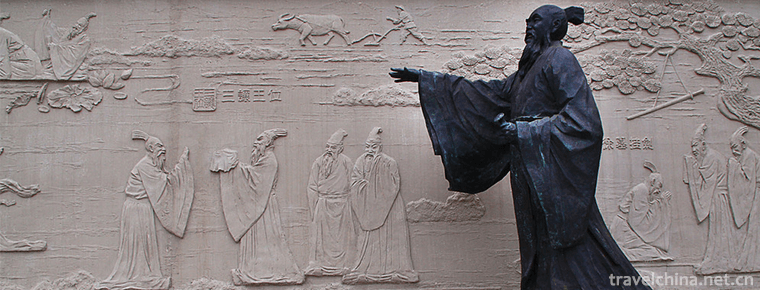
-
Beigushan HillBeigu Mountain
Beigu Mountain, one of the three scenic spots in Zhenjiang, overlooks Beigu, pillows the river, rocky walls, and the mountain is dangerous, so it is named Beigu Mountain.
Views: 118 Time 2018-12-06 -
Sanxingdui Museum
The Sanxingdui Museum was founded in August 1992 and opened in October 1997. It is located in the northeast corner of Sanxingdui Site, a national key cultural relic protection unit. .
Views: 423 Time 2018-12-18 -
Yunya Temple Scenic Area
Yunya Temple Scenic Area is a comprehensive scenic area, which is represented by the unique Danxia landform on the Loess Plateau, and is composed of abundant forest resources.
Views: 138 Time 2018-12-22 -
Bayi Memorial Hall in Nanchang
The Bayiyi Memorial Hall in Nanchang was established in 1956 and officially opened to the outside world on October 1, 1959. In 1961, it was announced by the State Council as the first batch of key nat.
Views: 154 Time 2018-12-31 -
Hukou Waterfall
Hukou Waterfall is a national scenic spot and a national AAAA scenic spot. Hukou Township, Yichuan County, Yan'an City, Shaanxi Province in the west, and Hukou Town, Jixian County,.
Views: 154 Time 2019-01-16 -
Dabie Mountain Folk Songs
Dabie Mountain folk song is a traditional folk song widely circulated in the west of Anhui Province. With the unique regionality of the interdependence of mountains and rivers.
Views: 247 Time 2019-04-23 -
Restoration Techniques of Ancient Ceramics
Ancient ceramic restoration technology is a special artistic creation of comprehensive modeling, sculpture, color, calligraphy, painting, chemical industry, etc. Ancient Ceramics Restoration must be c.
Views: 689 Time 2019-05-01 -
Legend of the Ancestors of the Loba Nationality
The legend of the ancestors of the Loba nationality is an organic part of the life of the Loba people, a mirror of the Loba society and a way of existence of the folk life of the Loba people..
Views: 102 Time 2019-05-15 -
Guangxi drama
One of the local operas of the Zhuang nationality in Guangxi. Yongju Opera belongs to the Pihuang Vocal Tune System, which originated in Hunan. It was formerly called Guangju Opera, Old Opera, Local O.
Views: 166 Time 2019-07-14 -
Cantonese opera Yuequ
Cantonese Opera is a popular Cantonese dialect area in Guangdong and Guangxi, and has spread to Hong Kong, Macao, Southeast Asia and the Americas where Cantonese overseas Chinese live. It is a variety.
Views: 154 Time 2019-07-16 -
Deyang Deyang transportation
By the end of 2018, the total mileage of Deyang highway was 8345.2 km, including 7861.0 km of grade highway, accounting for 94.2% of total highway mileage; 655.8 km of high-grade highway and 205.5 km of expressway. The railway operating .
Views: 240 Time 2020-12-14 -
Plant resources in Meishan
There are 2278 species of wild plants belonging to 861 genera and 229 families in Meishan City, including 149 species of bryophytes belonging to 71 genera and 48 families, 155 species of ferns belonging to 73 genera and 36 families, 20 species of gymnosperms.
Views: 360 Time 2020-12-18
